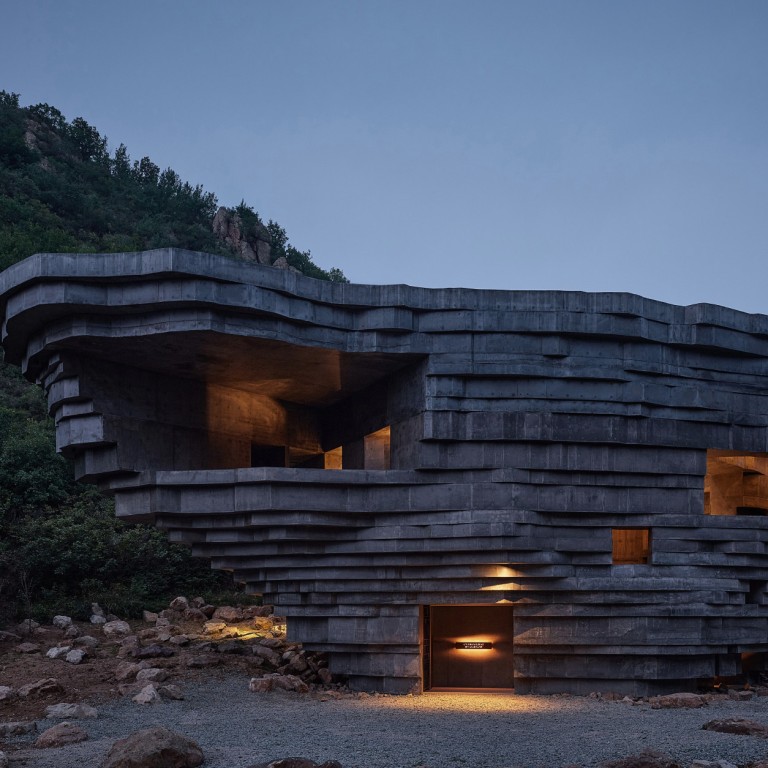
Upside-down concrete pyramid in China a concert hall that’s one of a kind – open to the skies and designed to minimise its impact on nature
- The Chapel of Sound, built in an area of outstanding national beauty near the Great Wall of China, seats 150 in a space that feels primitive
- It is possibly the most extraordinary work yet by Huang Wenjing and Li Hu of Beijing-based OPEN Architecture, known for pushing the envelope with projects
In a wooded valley in the Jinshanling mountains, in China’s Hebei province, some 150km from Beijing by road, a new shape rises from the ground.
It is dark and spreads upwards and outwards like smoke, yet it is solid like rock, stratified and flat-topped. It has large openings, and as you approach it, you may hear music coming from them.
This is the Chapel of Sound, an open-air concert venue that officially opens in April. It is the latest and perhaps most extraordinary building yet by Beijing-based OPEN Architecture, founded by Huang Wenjing and Li Hu.
Li says: “We built an upside-down pyramid of concrete.” That’s because, Huang says, “We wanted the building to land with the smallest possible footprint”.

Huang and Li were based in New York for a decade, studying and later working with top international architecture offices there, Li with Steven Holl and Huang with Pei Cobb Freeman. In 2008, they established an office for OPEN Architecture in Beijing, and repurposed a warehouse into a cultural events centre called Studio X.
There followed a string of acclaimed projects in China, from entire educational campuses to a prototype Martian house exploring simple living, called MARS Case (2018), exhibited next to Beijing’s Birds Nest Stadium.

The location is remote and harsh but has outstanding natural beauty, something the pair wanted to preserve. “We wanted to minimise our impact on nature” and “be part of the valley”, says Li, who recalls the “spiritual quality” of the site.
They considered appropriating a natural cave for the project, but he jokes that one nearby, occupied by a solitary Taoist monk halfway up the mountain, was “not big enough”. The eventual design takes a very different form to a cave, but nevertheless succeeds in creating two cavern-like spaces.

Inspiration for the shape came from boulders deposited by glaciers. The building, 14 metres (46ft) long at ground level but expanding to 36 metres at its roof level 12 metres above ground, looks as though a boulder has been sliced horizontally and the top part removed.
In its auditorium, which allows performances without amplification, big concrete steps create amphitheatre-like seating for about 150 people, with rectangular openings looking out at the landscape beneath a central oculus open to the sky.
The space feels hard and primitive, but with stage lighting, brass fixtures and a drinks space, it is recognisable as a contemporary concert hall.
A second stage for amplified music looks out over a grass slope from a space hollowed out of one end of the building, like a cave mouth. Subject to the weather and time of day, performances anywhere in the building can happen without electricity, reinforcing the impression of it being off-grid.
Architect couple who elevate the ordinary explain their ethos
The use of concrete, laced with local minerals to give it the look of natural rock, enabled the complex shape to be created in layers as a single, “seamless” solid block.
Huang says: “I see different things, actually.” For her, the erosion of the Great Wall is a reminder of “the damaging power of nature [and] how weak human structures can be”.
